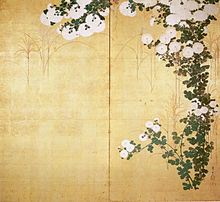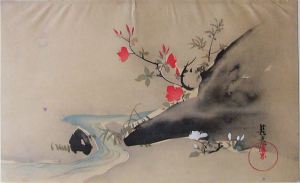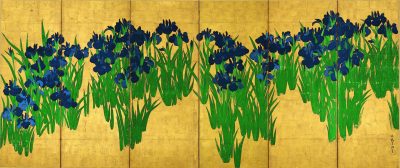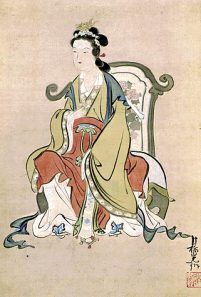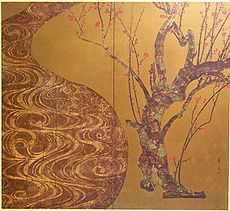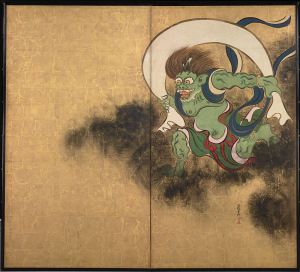Ogata Korin and Japanese Art: Legacy Heightened by Sakai Hoitsu
Lee Jay Walker
Modern Tokyo Times
The art of Ogata Korin remains potent because of clarity and his own unique ways. However, at one point it appeared that the winds of time would threaten his legacy. If this had happened then Japanese art would have been the loser. Thankfully, Sakai Hoitsu would change this because this individual understood the powerful art of Korin. Therefore, Hoitsu restored his reputation and opened up his art to new artists.
Korin had been born into a wealthy household because his father was a thriving merchant. More important, his father had a keen eye for art. Given this reality, he nurtured his son and gave him a firm foundation. This proved to be a rich blessing because Korin was blessed with amazing skills and he also had something new to offer the art world.
It is certainly true that Korin admired Hon’ami Koetsu and Tawaraya Sotatsu because both individuals influenced him. Therefore, aspects of this influence can be felt within the “heart” of Korin but this gifted artist also had his own distinctive style.
For example, Korin focused on bold designs and he utilized contrasting colors and the power of this can be felt deeply within his artwork. Also, Korin would manipulate space and sometimes he would disregard the conventions of his day. This applies to rejecting pure realism within his art and manipulating nature in order to expose the beauty he witnessed. Therefore, while Korin respected Koetsu and Sotatsu to the full he also had his own unique style and this attracted Hoitsu.
In a past article, I comment “in the history of art the “shadow of time” nearly bypassed him after his death because Korin was becoming a forgotten artist or at least on the periphery. Sakai Hoitsu would change this because he brought Korin back “from the cold” and “into the light” once more… Therefore, with Sakai Hoitsu (1761-1828) reviving the interest of Korin he once more became remembered and interest grew because of this factor. Hoitsu also reproduced some of the best work of Korin and this was a timely reminder to all lovers of art in Japan that Korin played his role when it came to creativity and expressing serenity.”
If you look at the White and Red Plum Blossoms by Korin it is clear that the angle of the viewer – and that of the artist – is extremely fascinating. At first, it isn’t noticeable to many individuals because everything appears normal. However, the more you look then clearly the angle is intriguing from a Western art point of view.
On the following website (http://www.all-art.org) it is commentated that “Ogata Korin used none of these Western perspective conventions. He showed the two plum trees as seen from a position on the ground, while viewers look down on the stream between them from above. Less concerned with locating the trees and stream in space than with composing shapes on a surface, the painter played the water’s gently swelling curves against the jagged contours of the branches and trunks. Neither the French nor the Japanese painting can be said to project “correctly” what viewers “in fact” see. One painting is not a “better” picture of the world than the other. The European and Asian artists simply approached the problem of picture-making differently.”
It is factual that Korin is not internationally famous, unlike a few Japanese artists who are widely known. However, fame and stunning art are not always a natural flow. Also, the art world is extremely broad and some styles have hit the imagination more and received greater international attention.
Despite this, the legacy of Korin is powerful in modern Japan because he is rightly known for being distinctive and enhancing the richness of Japanese art. On top of this, the more you focus on his art then the more it becomes apparent that his unique style appeals today – just like it appealed greatly to Hoitsu. Therefore, Korin leaves behind a lasting legacy because you can visualize high society in the golden periods of Kyoto and Nara when viewing his art.
Modern Tokyo News is part of the Modern Tokyo Times group
DONATIONS to SUPPORT MODERN TOKYO TIMES – please pay PayPal and DONATE to sawakoart@gmail.com
http://moderntokyotimes.com Modern Tokyo Times – International News and Japan News
http://sawandjay.com Modern Tokyo Times – Fashion
https://moderntokyonews.com Modern Tokyo News – Tokyo News and International News
http://global-security-news.com Global Security News – Geopolitics and Terrorism
PLEASE JOIN ON TWITTER
https://twitter.com/MTT_News Modern Tokyo Times
PLEASE JOIN ON FACEBOOK
https://www.facebook.com/moderntokyotimes
Some Japanese art and cultural articles by Modern Tokyo Times are republished in order to highlight the unique reality of Japanese culture to our growing international readership.

